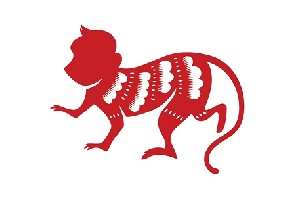The strength of an individual’s self-element (day master 日主) helps an analyst determine what certain aspects of life might have a positive or adverse effect on the person.
For example, if a subject (male or female) has a self-element of earth, then water would represent his wealth.
If this person is of weak earth, then water would further weaken the self-element as the former would tire from roughing up the latter.
Therefore, wealth might not be good for this person.
If this person is of strong earth, then water would weaken the self-element to push it closer to achieving balance. Thus, wealth would be good for this person.
The above basic example takes into consideration that in feng shui and bazi analysis, it is neither good or bad to be strong or weak.
The ideal bazi (if there is one) would be one that is balanced.
When the strength of a person’s self-element can be determined, the individual’s favorable element(s) can then be identified. The concept of balanced bazi means that a strong day master would favor elements that weaken it, while a weak one would desire elements that strengthen it.
For example, if a person has a self-element of weak metal, earth and metal would be his favorable elements. And if he is strong metal, then water, fire and wood would be favorable.
To determine the strength of the day master, 5 factors must be taken into consideration.
- Supportive arrangement of characters
- Born in season
- Life stage of earthly branches
- Combinations
- Rooted daymaster
After running the numbers with the above factors, the strength of a self-element should be clear as day.
Supportive characters
The most basic and easiest method to observe self-element strength is to look for supportive elements that make up the 7 other characters aside from the self-element.
Out of the 7 characters, that are represented by elements, more supportive elements would mean a stronger self-element and more unsupportive elements would mean a weaker self-element.
For example, if the self-element is water, then supportive elements would be metal and water. Don’t confuse this with the 10 gods.
If there are 4 or more characters in the bazi that are of water or metal, then this person is deemed to have a strong self-element.
Conversely, if water or metal makes up 3 or less of the other 7 characters, then there is a weak self-element.
Note that wood, earth and fire would weaken water according to the rules of the 5 elements.
The supportive elements of different self-elements are listed below:
- Wood – water, wood
- Fire – wood, fire
- Earth – fire, earth
- Metal – earth, metal
- Water – metal , water
Born in season
In each of the 4 seasons of spring, summer, autumn and winter, an element would reign supreme.
- Spring – wood
- Summer – fire
- Autumn – metal
- Winter – water
Earth is strongest during transitional phases of the seasons.
When we look for supportive seasons with reference to the self-element, we look at the earthly branch on the month pillar.
The table below indicates the supportive seasons represented by the monthly branch with reference to the day master.
| Self element | In season |
Supportive season |
| Wood | E3, E4, E5 | E1, E12, E2 |
| Fire | E6, E7, E8 | E3, E4, E5 |
| Earth | E2, E5, E8, E11 | E6, E7, E8 |
| Metal | E9, E10, E11 | E8, E11 |
| Water | E1, E12, E2 | E9, E10, E11 |
The legend for the above table can be referenced here.
Whether someone is born in season carries a lot of weight in determining the strength of a person’s self-element.
So much so that when the month pillar’s earthly branch is of the same element as the self-element, it is almost certain that this individual will have a strong self-element, baring extraordinary bazi configurations.
If for example, if a person’s day master is wood and born in spring, we can hardly ascertain that he has a strong self element when the remaining 6 characters are all metal.
Advanced bazi readings taking into account which phase or which day of the season of birth a person’s birthday falls at. This plays a part in estimating strength and helps to determine whether the self-element is “hot or cold” and “dry or wet”.
For example, even though Wei (E8) is a season of fire and earth according to the calendar, we all know that it’s the period approaching the end of summer and the beginning of autumn. Thus, the heat is not as intense as during Wu (E7).
These meticulous details can actually lay out a person’s day master strength more accurately.
However, it must be said that going into such fine details are often unnecessary unless we are trying to pinpoint something very specific.
For example, if a person is overweight, she is overweight. Specifically detailing how much overweight she is will not change the fact that maintaining an ideal weight range will result in a healthier body.
Life stages
After plotting a bazi, to determine whether the earthly branches in the bazi are supportive to the self-element, we must refer to the life stages that the year branch, day branch and hour branch, are at.
The month branch is left out as that is already used to determine whether his person in question is born in season.
The 12 stages of bazi pillars are explained here.
The stronger the life stage the earthly branch is at, the more supportive it will be of the self-element, and the stronger the self element will be.
Combinations
When certain heavenly stems meet, they can fully transform into new elements. The same can be said of earthly branches.
For example, if one has an earth self-element, the presence of H1 Jia wood can mean that he is constantly under attack by it.
However, an additional presence of H5 Wu earth can result in H1 and H5 combining into earth under the right conditions. Effectively eliminating the presence of H1, or reversing it’s effect from negative to positive.
The list of possibly combinations and clashes between stems and branches can be observed here.
As you can tell, this is a higher level of bazi destiny analysis. And you should only attempt to decipher them when you have a comprehensive understanding of the basics.
Rooted daymaster
The concept of rooted in bazi refers to the presence of heavenly stems within the hidden stems contained in the branches., that are similar to those contained in the original bazi.
For instance, if H2 Yi wood is on the month pillar, and there is the presence of Mao, Chen or Wei in any of the pillars, then it can be observed that H2 can be found as hidden stems in all the 3 mentioned branches.
This means that H2 is rooted.
A rooted daymaster would find it’s character present as hidden stems in the earthly branches. This is an indication that it has hidden inner strength that the facade does not show.
In fact, some bazi experts find this as the single most important factor in determining whether a self-element is strong or weak.
Need for Judgment
It might disappoint you to realize that there is no hard and fast rule to determine the strength of a day master.
While the guide above would probably help you determine a day master’s strength most of the time, bazi configurations can often require a feng shui master to practice judgment.
This is why we often see feisty arguments and debates online about bazi interpretation. Because people disagree with the judgment and opinions of others.
This is also an important reason why bazi experts often need to ask questions about the past of the person in question.
This is so that past events can be used to match up with bazi dynamics. Helping a bazi reader to ascertain what certain stems and branches mean to someone with a strong or weak self-element.















